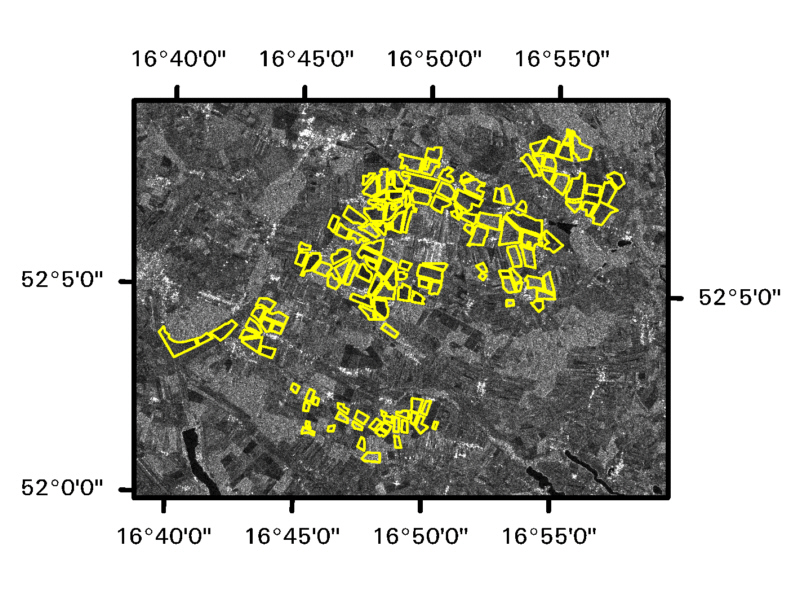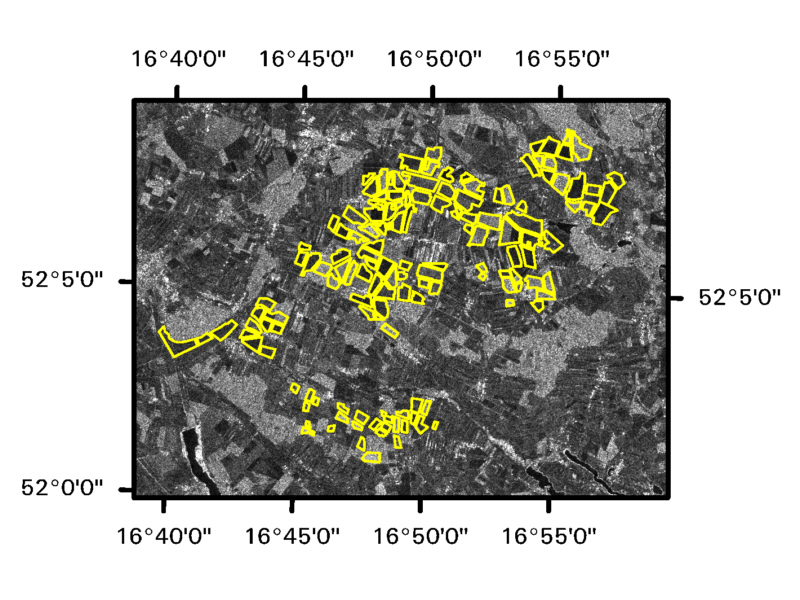Determining biomass and soil moisture changes
Preparation of the method for determining biomass and soil moisture changes on the basis of data delivered by recent satellite missions
Grant No 4 T12E 026 30 (IGiK G-92)
Project leader: prof. dr hab. Katarzyna Dabrowska - Zielinska
12.04.2006 - 11.04.2009


ENVISAT ASAR IS6 HH image registered in 20.05.2007 ENVISAT ASAR IS6 VV image registered in 20.05.2007
So-called „Water Cloud Model” (WCM), which describes vegetation canopy as a cloud, prepared by Atema and Ulaby (1978), modified by Prevot (1993) and Champion (2000) is used within the project. The model is fed with various plant parameters (biomass, LAI) and soil moisture, which are derived from ground measurements. It allows to calculate total backscattering coefficient as a sum of signal coming from soil and plants. This coefficient will be calculated for each microwave wavelength (C, L, X) recorded by ENVISAT, ALOS, TERRA-SAR satellite sensors, as well as for various incidence angles and polarizations. Inversion of WCM model will enable to derive from satellite data plant parameters: biomass and LAI and soil moisture under plant canopies. Comparison of the obtained values with real measurements will permit to estimate accuracy of model application. Next WCM model based on satellite-derived parameters can be applied for different areas and time periods in order to obtain biomass and soil moisture information.
Simultaneously, on the basis of optical satellite data (ASTER, MODIS, CHRIS-PROBE, MERIS, AATSR) new indices characterizing biomass and soil moisture will be derived. These parameters will be next entered to WCM model, in order to use them for calibration instead of ground measurements. They will be also compared with parameters obtained as a result of inversion of WCM model, in order to assess precision of its prediction. The prepared method will allow to monitor with high temporal frequency soil moisture conditions and biomass, analysing their changes and spatial extent on large agricultural areas.
